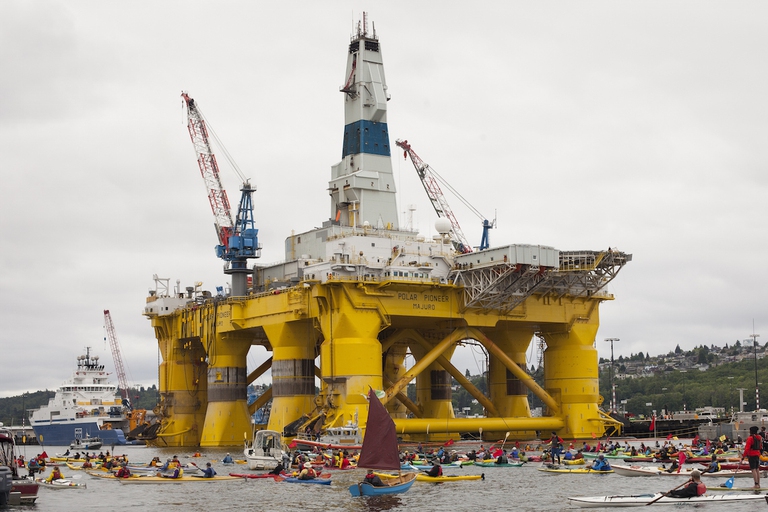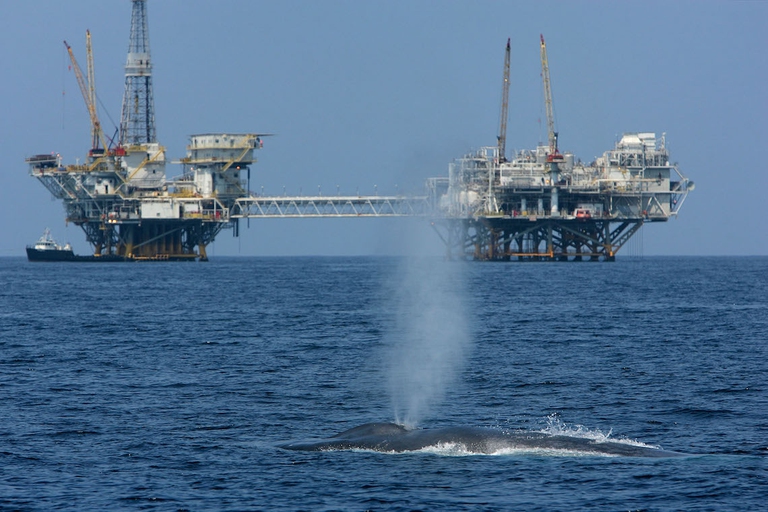
A group of experts in Tokyo suggested pouring radioactive water from Fukushima into the open sea. A marine biochemist explains the consequences of this absurd decision.
As the name suggests, seismic surveys use seismic waves, like the ones generated during an earthquake, to explore the structure and features of the Earth’s subsurface. This type of exploration in the oceans is expanding at a rapid rate due to technological improvements and the increasing needs of our fossil fuel-based economy, so that it
As the name suggests, seismic surveys use seismic waves, like the ones generated during an earthquake, to explore the structure and features of the Earth’s subsurface. This type of exploration in the oceans is expanding at a rapid rate due to technological improvements and the increasing needs of our fossil fuel-based economy, so that it now reaches higher latitudes and deeper waters, all throughout the year. Of particular concern is the Arctic region, where the decline in sea ice coverage has opened a previously untapped potential for large-scale exploration and extraction of hydrocarbons.
Because of the loud noise they introduce in the marine environment, seismic surveys have raised concerns for their effects on marine life. A large body of scientific evidence highlights that these surveys can displace marine animals from their habitat, disrupt their behavior, mask their communication, cause stress and, at close ranges, even damage their hearing systems. Effects have been documented on marine mammals, but also on fish and invertebrates, suggesting that the entire ecosystem might ultimately be impacted. The low frequency of the noise also means that this can propagate across entire oceans, for hundreds, or even thousands, of kilometers.
A marine seismic survey involves one or more ships that deploy the source of the seismic wave, generally an air gun or an air gun array. When fired (typically once or twice per minute), air guns release highly compressed air and generate an intense sound impulse directed downwards. As this acoustic wave travels through the water column and into the seabed, it reflects off layers of rock with different properties. Seismic ships also tow one or more receiver cables that contain several hydrophones (underwater microphones), which pick up the reflected echo from the seismic wave. The time of arrival and characteristics of the echo provide information on what the wave has encountered in the seabed, resulting in a detailed image of the underlying structure. Commercial seismic surveys generally aim to identify reservoirs of hydrocarbons, so that oil and gas companies know exactly where to drill to extract them. Seismic surveys are also used for research purposes to study the geophysical properties of the seafloor.
A panel of experts from various universities and organizations across the globe authored a study published in Frontiers in Ecology and the Environment. They stress that, given the wide spatial and temporal scale over which seismic survey noise can propagate, current measures to assess, mitigate and monitor potential consequences are, at best, insufficient. Protocols are not standardized and have not been updated with the most recent scientific evidence on impacts and mitigation techniques, such as marine vibration, an alternative technology that could replace air guns. Moreover, they do not account for the cumulative and repeated exposure animals are subjected to over time, which can cause longer-term effects that are difficult to detect at a small scale.
The experts suggest that greater regional and international collaboration among governments, scientists, environmental organizations and industries is urgently needed to promote the successful coordination of management efforts and planning of activities at sea. The European Union and other regional bodies now recognize noise as a pollutant, but further international regulation that crosses national and regional boundaries is required, for example via a revision of the existing International Convention on the Prevention of Pollution from Ships (MARPOL). This would create standardized rules and protocols that would facilitate robust assessments of the potential impacts, the implementation of cutting-edge mitigation strategies and the collection of critical monitoring data.
Siamo anche su WhatsApp. Segui il canale ufficiale LifeGate per restare aggiornata, aggiornato sulle ultime notizie e sulle nostre attività.
![]()
Quest'opera è distribuita con Licenza Creative Commons Attribuzione - Non commerciale - Non opere derivate 4.0 Internazionale.
A group of experts in Tokyo suggested pouring radioactive water from Fukushima into the open sea. A marine biochemist explains the consequences of this absurd decision.
A federal court in Washington, D.C. has struck down the Dakota Access Pipeline, following years of campaigning by the Standing Rock Sioux tribe.
The Scottish island of Eigg is self-sufficient for its energy needs, relying almost entirely on renewable sources, especially thanks to a coordinated community effort.
President Magufuli in unmovable in going ahead with the Stiegler’s Gorge dam despite conservationists’ warnings of the damage it will cause the Selous Game Reserve’s ecosystem and wildlife.
A large dam along the Luangwa River in Zambia would have posed a serious risk to local people and wildlife, leading hundreds of thousands to oppose it. A call to which the government responded by halting plans to build it.
The first one megawatt solar power plant in the Chernobyl exclusion zone has become operational. This is the first step in a renewable energy development project promoted by the Ukrainian government in the area.
A tanker exploded at a gas and petrol station in Nigeria’s Nasarawa state on the 10th of September, killing 35 people and leaving some burned beyond recognition; 3 citizens had several spine and brain injuries, 2 of them are still on Intesive Care Units. Fela Habila , a local singer, is now stable and out of danger but
The largest tidal power plant in the world will be built in the Larantuka Straits. It will serve 100,000 people and help overcome some of the challenges of energy provision in Indonesia.
Robben Island’s solar energy micro-grid project will produce almost one million kilowatt hours of electricity annually, significantly reducing the cost and impact of buying diesel.









